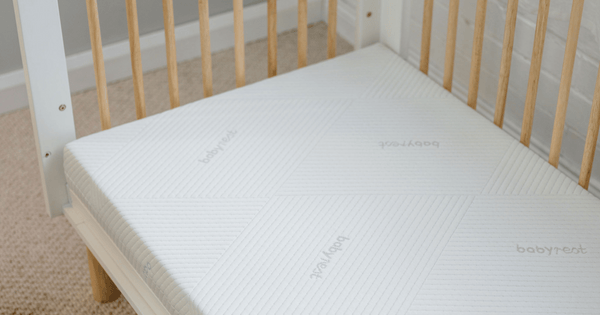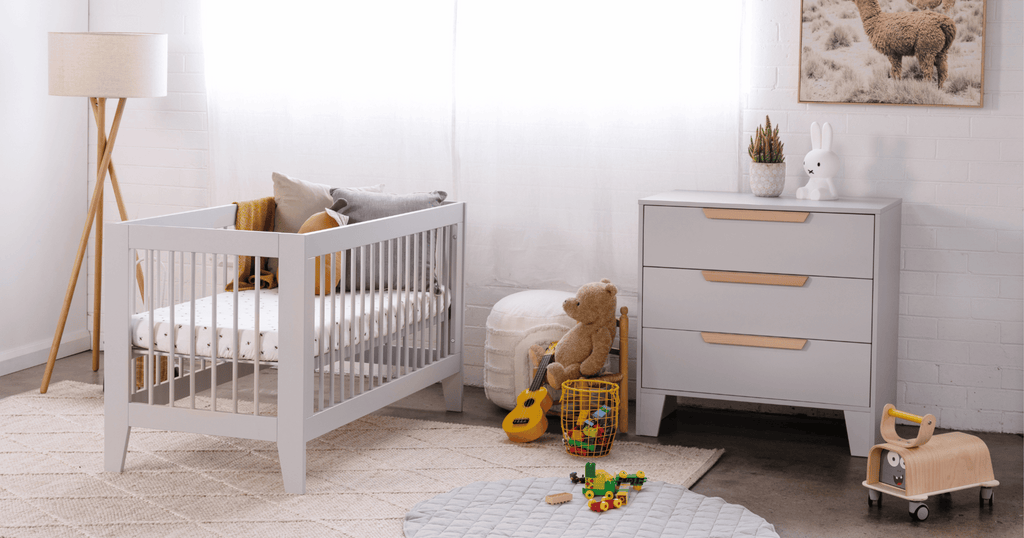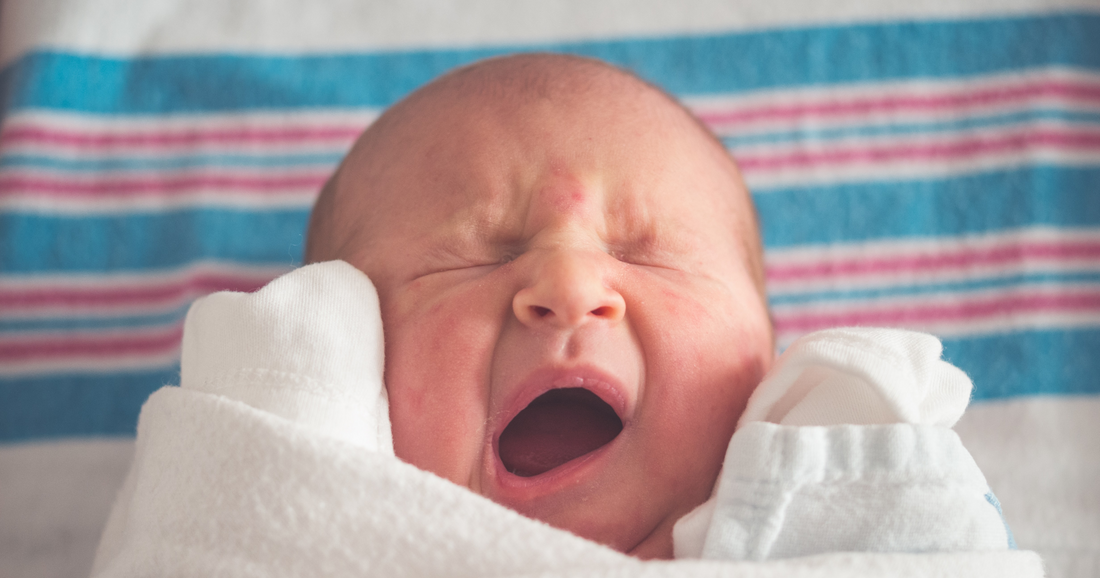Welcome to Sleeping 101, a comprehensive guide to ensuring your little one gets the rest they need for healthy growth and development. As a new parent, your baby’s sleep is likely to occupy more than its fair share of brain-space, and navigating it can be confusing - let us guide you through the basics so you can feel confident in your decisions.
Let’s start with the sleep basics. Join us as we explore what to expect in the first year, what exactly safer sleep entails, how to choose the right cot mattress (and why it matters), as well as some practical tips and tricks to equip you in the sleep department for the early years of parenthood.
Sleep (and regressions) in the first year
Sleep plays a profound role in your baby’s growth and development. From helping to form everything from their motor, to learning and language skills, while supporting brain and memory development, not to mention improving their mood and attention span, understanding the basics will make those early months and years much easier as a parent.
A newborn’s sleep looks very different to that of a six month old, not to mention a one year old! While most babies under six months will need feeding and settling throughout the night, as they get older, they will slowly require less sleep, be able to sleep for longer periods of time, and more of this sleep will happen overnight.
According to Stanford Medicine Children’s Health, newborns typically sleep around 16 hours per day - usually no more than one to two hours at a time - of which half is at night and half is during the day. By three months, you can expect around 15 hours of sleep per day, of which only four to five is during the day. From six months to a year old, babies typically sleep around 14 hours a day, although the total hours of daytime naps continue to decrease. See the full table here.
When it comes to developmental milestones of any kind, it’s important to understand that every child is different. It’s also important to prepare yourself for sleep regressions - these typically occur around four, eight, 12 and 18 months. For some babies, this may happen late, early or not at all. So don’t panic if your formerly ‘good’ sleeper suddenly doesn’t sleep so well anymore - it’s perfectly normal.
What is safer sleep?
Safer sleep practices are paramount for your baby's wellbeing. The ‘ABCs of safer sleep’ stand for Alone, Back, and Cot. This means placing your baby on their back to sleep, in their own cot that meets Australian Safety Standards, and is free from loose bedding or toys. These simple guidelines drastically reduce the risk of Sudden Infant Death Syndrome (SIDS) and other sleep-related accidents. The safest place for baby to sleep in their first year is in a safe cot next to your bed.
Babies sleep well when they’re not too hot or too cold. Dress baby appropriately for the temperature (avoiding over or under-dressing, as well as hats or beanies while they sleep). If you’re feeling anxious about your baby’s temperature, place your hand on their back or tummy to determine how hot they are.

Why choosing the right mattress matters
Most parents spend hours researching their cot and other nursery furniture, ensuring it meets their safety, quality and style requirements. However, the mattress is often an afterthought, with many happy to simply take the mattress offered in the package or by the retailer without doing their research.
However, considering your baby will spend around 14 to 16 to hours per day of their first year alone sleeping directly on it, is the mattress not more important than the cot? We believe the cot mattress should be the most researched item in the nursery, next to your baby’s car seat. Besides, we all know that the more comfortable your mattress, the better (and longer) you sleep. And if baby sleeps, so can you.
What should I look for in a cot mattress?
You may not be aware that there are currently no mandatory standards for cot mattresses in Australia. What we do have is the voluntary Australian/New Zealand standard AS/NZS 8811.1:2013 Sleep surfaces – Test for firmness. Looking for this standard on packaging is a simple yet effective way to narrow your search when it comes to mattress safety, and is referenced by Red Nose, the leading authority on safer sleep in Australia in their recommendations for a cot mattress:
-
Tested for firmness: If it is too soft, this increases the risk of suffocation. Ensure your mattress meets the voluntary test for firmness, AS/NZS 8811.1:2013.
- Tested for CO2 Rebreathing: Some soft surfaces can trap exhaled carbon dioxide, which your baby may then breathe back in. ‘Breathable’ doesn’t always mean safe - the only way to be sure a mattress minimises this risk is if it has passed the certified CO2 rebreathing test.
- The correct size: Ensure your mattress suits the recommendations on your cot, and that there is no more than a 2 cm gap between the mattress and the cot on any side.
- The mattress must be clean and in good condition: Consider carefully if you are planning to use a second-hand mattress or one that has been in unsealed storage.
These are considered the bare minimum for safer sleep. In addition to this, the following factors are also important when choosing the best cot or bassinet mattress:
- Comfort: For the best sleep, the mattress shouldn’t be so firm that it is uncomfortable for your baby. Some mattresses even offer varying degrees of comfort and support to best suit your baby’s needs as they grow.
- Ventilation: For breathability, temperature regulation and hygiene. Babies can’t regulate their own temperature just yet, and will wake up if they get too sweaty. Ventilation channels keep baby cool and the mattress fresh for longer.
- Materials used: Ensure you are comfortable with the materials used. Is natural fibre important to you? Is a removable/ washable cover important to you? What about hypoallergenic materials?
- Warranty: Ideally the warranty of the cot mattress would be at least 4 to 5 years so you can be assured it will last as long as your child will need to use it. For a bassinet/ cradle mattress, you are likely to only need it for 6-12 months so a longer warranty isn't as important.
At BabyRest, we take sleep seriously. Our award-winning cot mattresses feature multiple layers of technology to deliver ultimate comfort and support for rest during the day, through to deep sleep each night. Every detail is considered. When it comes to the best sleep surface for your little one, you can rest assured that we will bring you only the very best. Discover our range of mattresses here and experience the BabyRest difference.
Read our Cot Mattress Buying Guide →

Tips and tricks for better sleep
Now that you know what to expect in the first year of sleep, what safer sleep looks like and why choosing the cot mattress matters, here are three easy tips you can employ to make bedtimes more enjoyable for everyone involved.
-
Identify the signs of sleep readiness: Your little one may show that they are ready to sleep by rubbing their eyes, yawning, looking away and fussing.
-
Create a sleep-friendly environment: In addition to reducing stimulation around bedtime, keep the room dark, quiet, and comfortably cool to promote deep sleep. Blackout curtains can help block out external light, particularly during daytime naps, while white noise machines can drown out disruptive sounds so you can move around and make that cup of tea without fear of waking your little one up!
-
Babies thrive with consistency and routine: Creating a predictable bedtime routine signals to your baby that it's time to wind down. Include soothing activities such as a warm bath, rocking, reading a book or playing lullabies to help them relax and foster sweet dreams. Consistency with your responses to their nighttime waking can also help them fall asleep again faster. Maintaining routine can be particularly helpful if you are travelling and your baby needs to sleep in an unfamiliar environment.
As you embark on this journey of parenthood, remember that sleep is not only essential for your baby's growth and development, but also for your own well-being as a new parent. By prioritising safer sleep practices, choosing the right mattress, and implementing practical tips, you can create a nurturing sleep environment for your little one to thrive in. With patience and consistency, bedtime might just be one of your and your little one’s most cherished memories together. Sleep tight, and sweet dreams!
If you’re concerned about your baby’s sleep, speak with a child health professional. There are a wide range of resources and support services available - reach out to your paediatrician, GP or local hospital.
For any assistance or questions about mattresses or other nursery essentials, our team is here to help.

 FAST DISPATCH
FAST DISPATCH
 GENEROUS WARRANTIES
GENEROUS WARRANTIES
 HERE FOR YOU
HERE FOR YOU
